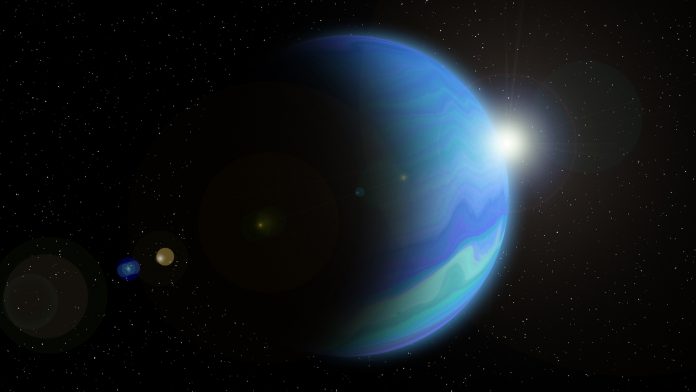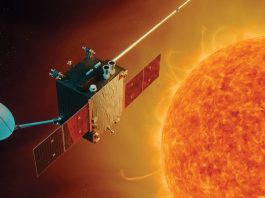A layer of ‘hot,’ electrically conductive ice may be the primary cause behind producing the magnetic fields of ice giant planets such as Uranus and Neptune.
Novel research from Carnegie and the University of Chicago’s Center for Advanced Radiation Sources has exposed the conditions under which two such superionic ices form. Their results have been published in Nature Physics.
Water to ice
Water molecules are comprised of two hydrogen atoms and one oxygen atom. As the conditions in which water exists shift, the structure and properties of these molecules are impacted. This is evident when liquid water is boiled into steam or frozen into ice.
The molecules that make up ordinary ice that can be found in a drinking glass or on the ground in winter are arranged in a crystalline lattice held together by hydrogen bonds between the hydrogen and oxygen atoms.
Hydrogen bonds are extremely versatile. This indicates that ice can exist in a remarkable variety of structures—at least 18 known forms—which occur under progressively more intense environmental conditions.
Superionic ice
One structure of specific interest is what is known as superionic ice, constructed at very high pressures and temperatures, in which the conventional water molecule bonds are altered, enabling the hydrogen molecules to float freely in an oxygen lattice. This flexibility means that the ice able to conduct electricity practically as well as a metallic material.
Observations of hot, superionic ice generated in the lab have resulted in contradictory findings, and there has been a massive amount of dispute about the precise environments under which the novel properties emerge.
“So, our research team, led by the University of Chicago’s Vitali Prakapenka, set out to use multiple spectroscopic tools to map changes in ice’s structure and properties under conditions ranging up to 1.5 million times normal atmospheric pressure and about 11,200 degrees Fahrenheit,” said Carnegie’s Alexander Goncharov.
Through this, the researchers—also including Nicholas Holtgrewe, formerly of Carnegie, now at the Food and Drug Administration in St Louis, and Sergey Lobanov, formerly of Carnegie, now at the GFZ German Research Center for Geosciences—were able to identify the development of two types of superionic ice, one of which they believe could be present inside the ice giant planets Uranus and Neptune.
Experiments under extreme conditions
“In order to probe the structure of this unique state of matter under very extreme conditions—heated by a laser and compressed between two diamonds—we used the Advanced Photon Source’s brilliant high-energy synchrotron x-ray beam, which was focused down to about three micrometres, 30 times smaller than a single human hair,” added Prakapenka, explaining the work done using the facility’s GSECARS beamline. “These experiments are so challenging that we had to run a few thousand of them over a decade to get enough high-quality data to solve the long-standing mystery of high-pressure, high-temperature behaviour of ice under conditions relevant to giant planet interiors.”
“Simulations have indicated that the magnetic fields of these two planets are generated in thin, fluid layers found at relatively shallow depths,” Goncharov concluded. “The conductivity of superionic ice would be able to accomplish this type of field generation, and one of the two structures we revealed could exist under the conditions found in these magnetic field-generating zones.”
Further study is necessary in order to fully comprehend the conductive properties and viscosity of these ice phases under ice giant-interior conditions.









